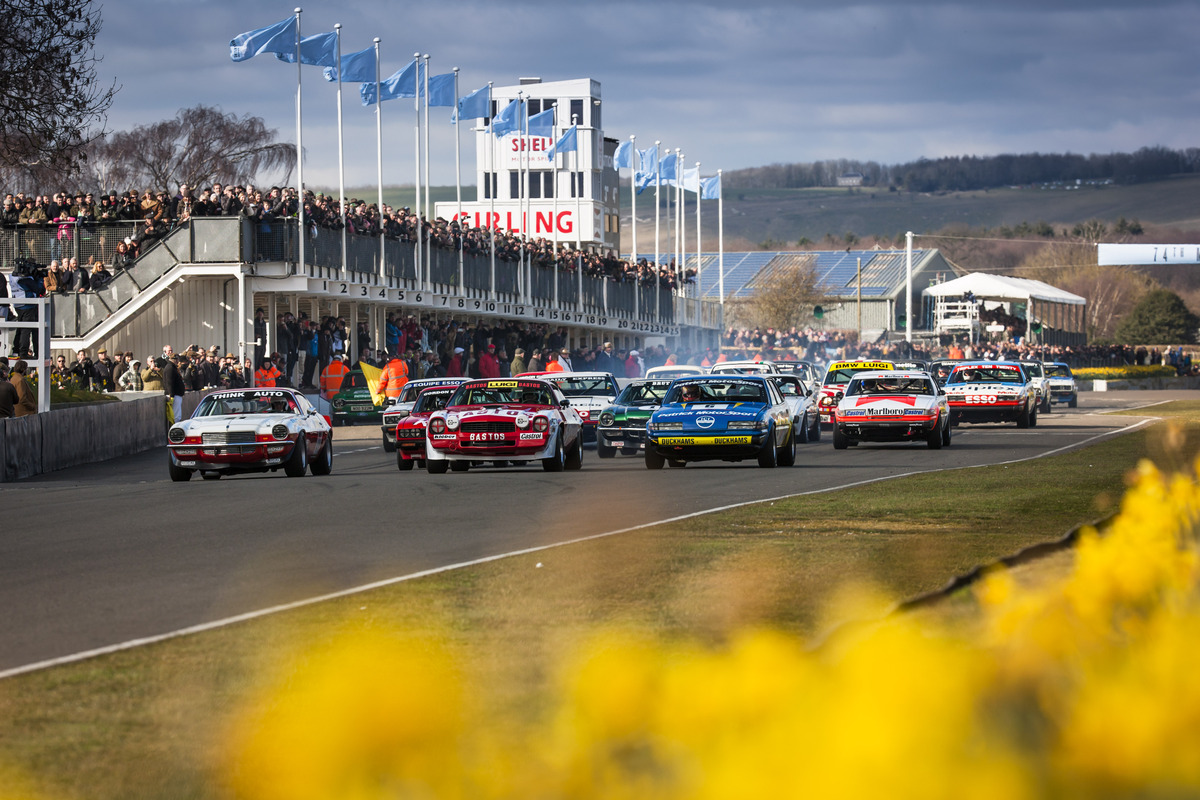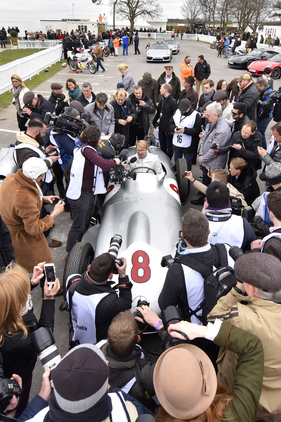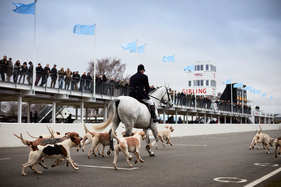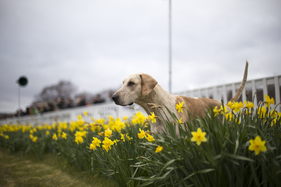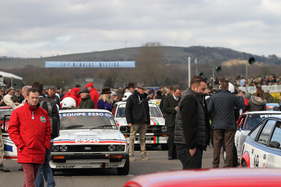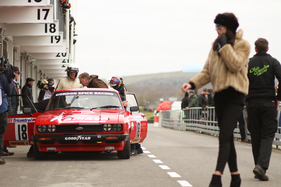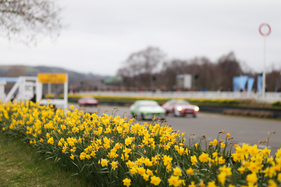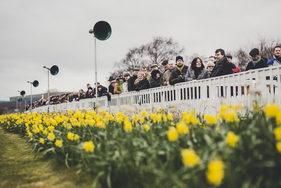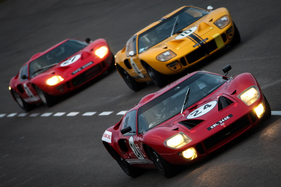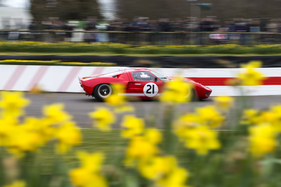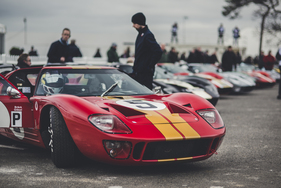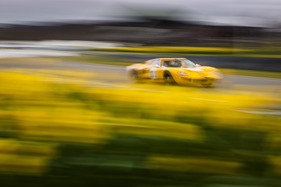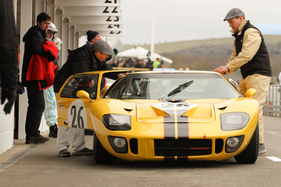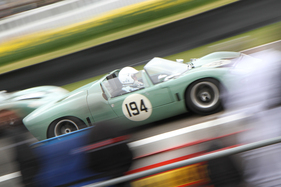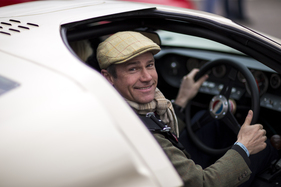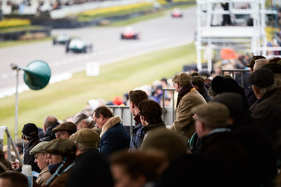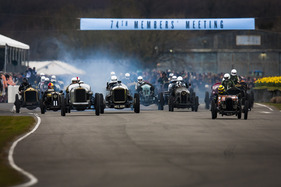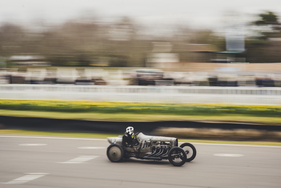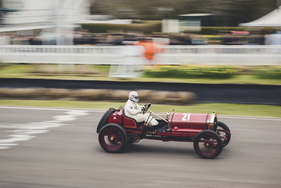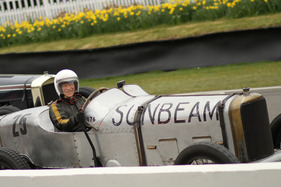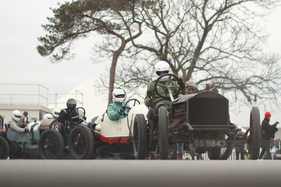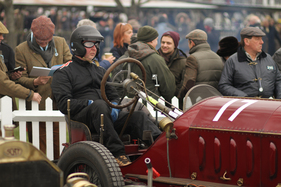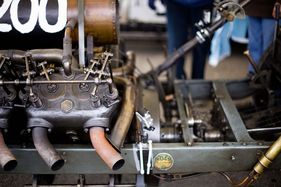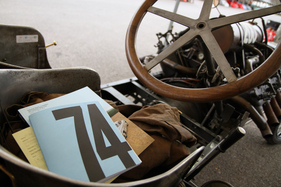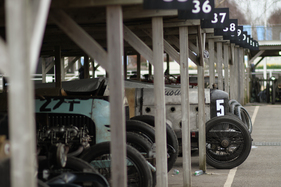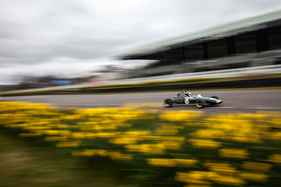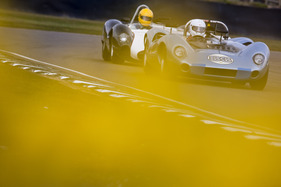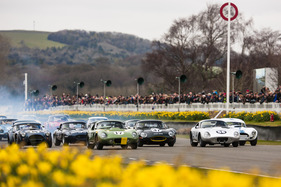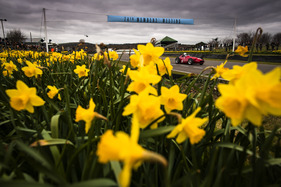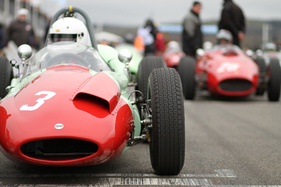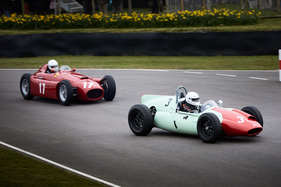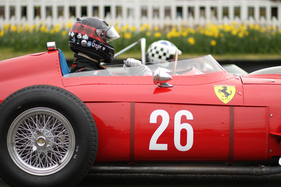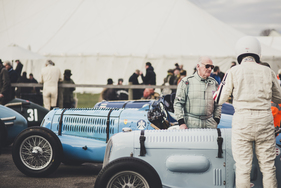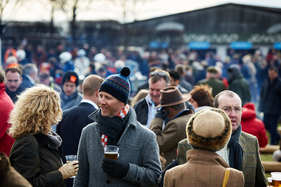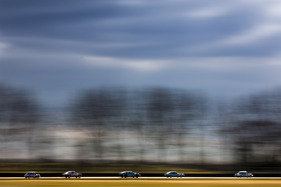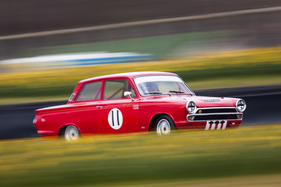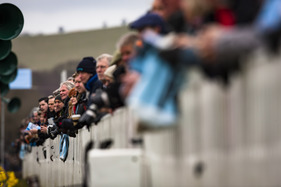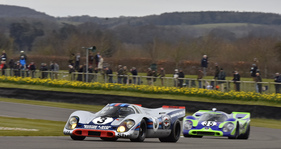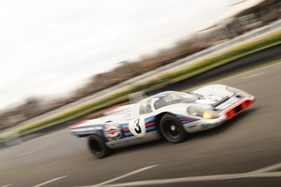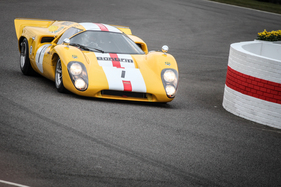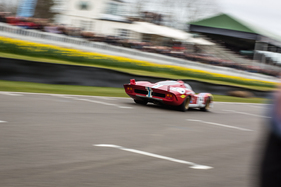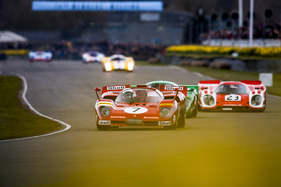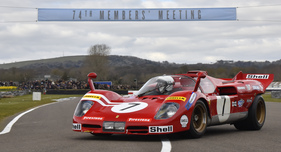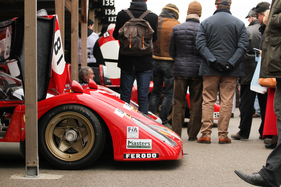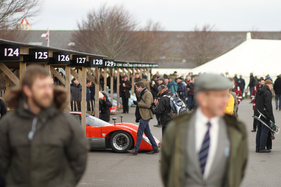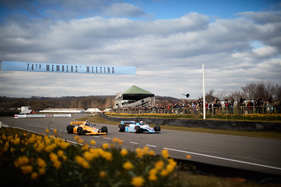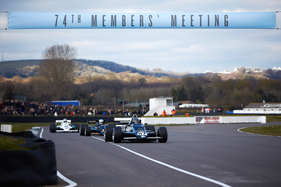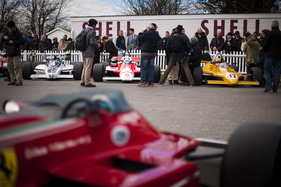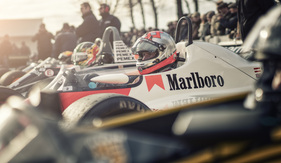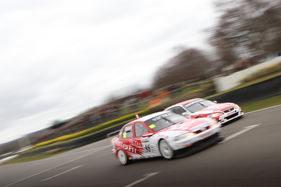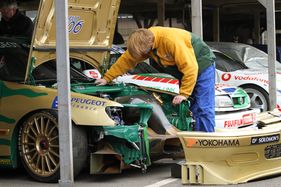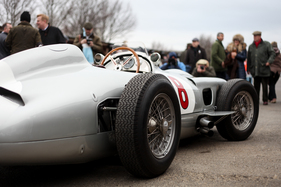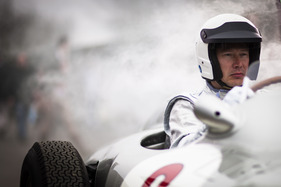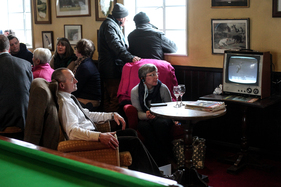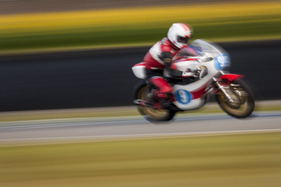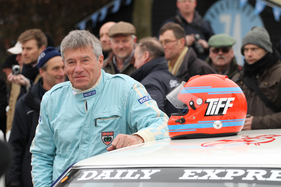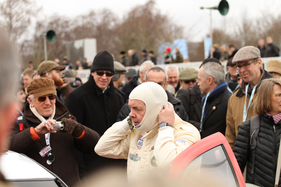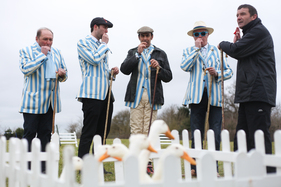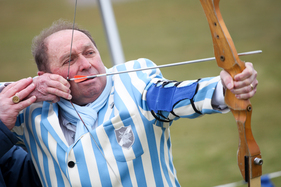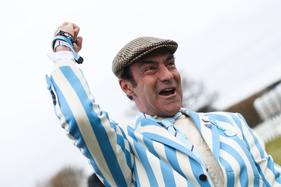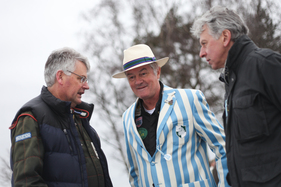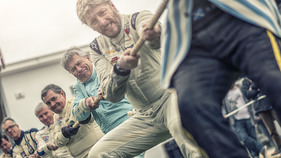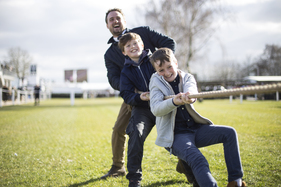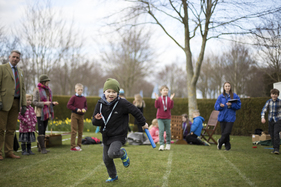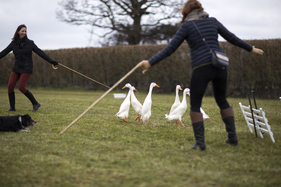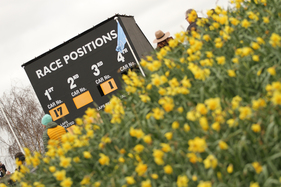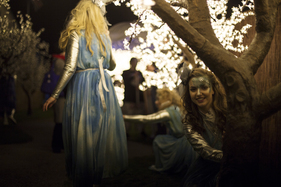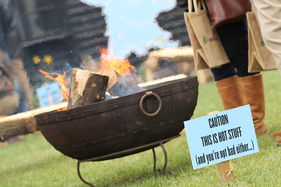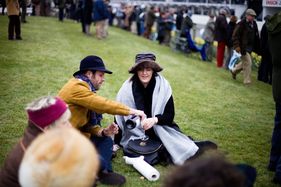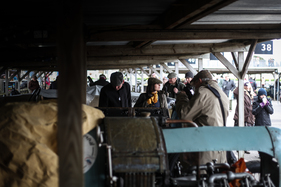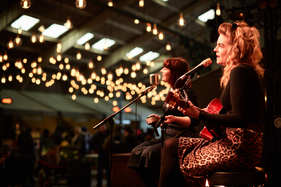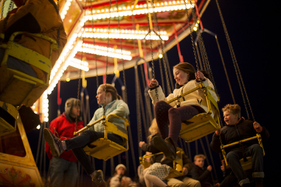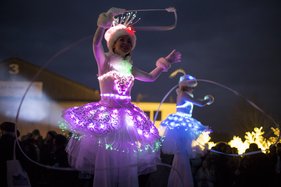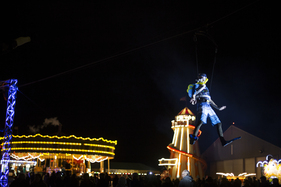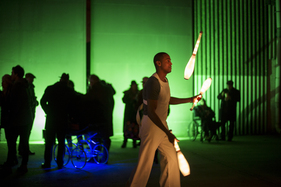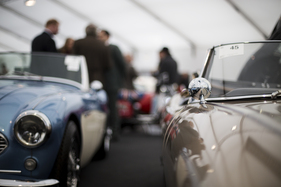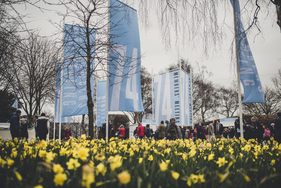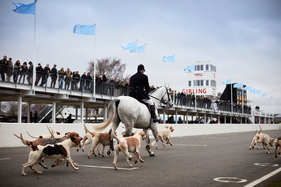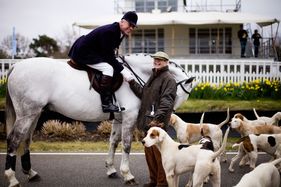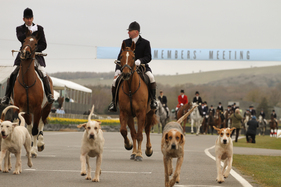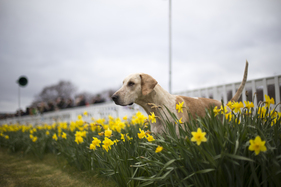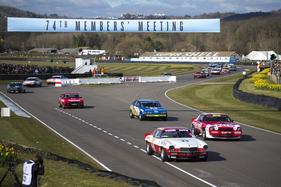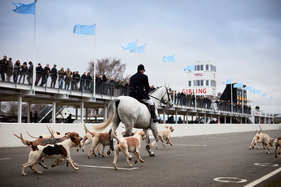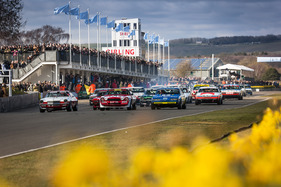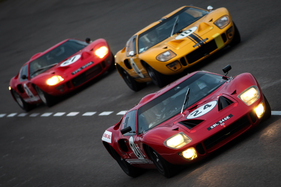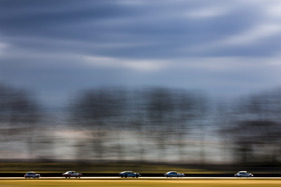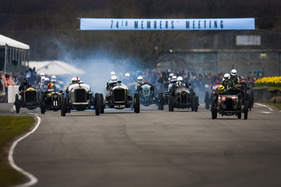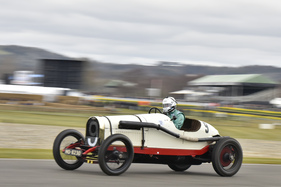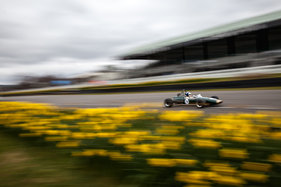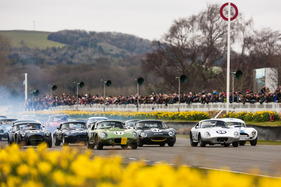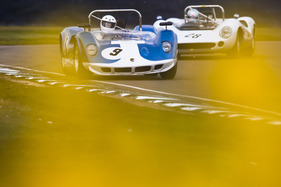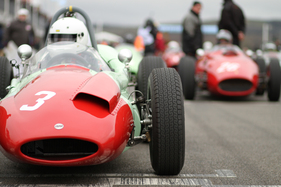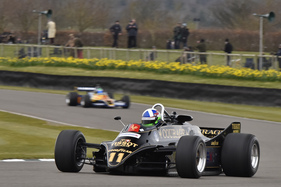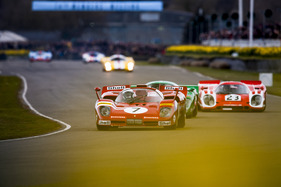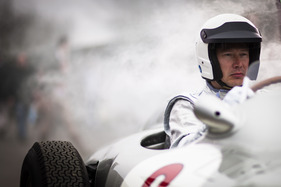The Goodwood Members Meeting, revived by Lord March, took place for the third time on March 19 and 20, 2016. The British Automobile Racing Club's Members Meetings were a popular tradition until 1966, and in 2014 they picked up where they left off in the 1960s due to the closure of the Goodwood circuit.
As in the two previous years, over 300 racing cars from different eras competed in twelve races. There was also a motorcycle race and demo runs, which were worth a visit to Goodwood in themselves.
Touring cars of the eighties in action
Lord March and his men set the pace in the very first race of the Gerry Marshall Trophy on the 3.83-kilometer circuit. The Group 1 touring cars from the period up to 1982 offered excitement and racing action at its finest in an extremely diverse field. Powerful and heavy Chevrolet Camaro Z28s competed against Rover 3500 SD1, Ford Capri III, Ford Escort RS 2000, BMW 530i, Triumph Dolomite Sprint and Mini 1275 GT. Add to this the exotic Alfa Romeo GTV6 and Mazda RX7 as well as the Volkswagen Golf GTI and the recipe for "door-to-door" battles and smoking tires was complete.
The Chevy Camaros clearly won the practice session, but the sprint race on Saturday was ultimately won by Chris Wart in the Rover 3500 SD1, just ten seconds ahead of John Young in the Ford Capri III. The Camaros followed behind, while Emmanuel Pirro's BMW 530i was unable to make its mark as expected.
The second race was then a triumph for the Bryants in the Chevrolet Camaro Z28, who were able to keep Ward/Shedden at bay in the Rover SD1. Touring car pro Steve Soper took third place with Young in the Capri III.
What looks like a clear-cut result on paper was much more controversial on the track and certainly exciting to watch from a spectator's perspective.
A race for Ford GT40s only
The world looked completely different in the Alan Mann Trophy, as only Ford GT40 models that had been involved in racing up until 1966 were permitted.
28 mid-engined sports cars from 1965 to 1967 were entered and the top positions were already highly contested in practice. In the race, it was a fight to the finish, so it is hard to explain why ten cars did not see the chequered flag. Cuff/Soper came out on top in their 65 GT40, while pole-setters Gläsel/Bräck had to retire on the fourth lap and Ellerbrock/Stippler on the 26th lap.
Sixties four-way battle
The touring cars of the early sixties engaged in a veritable four-way battle; cars from 1960 to 1966 with a maximum displacement of two liters were eligible. BMW 1800 TiSA, Mini Copper S, Ford Lotus Cortina and Alfa Romeo GTA and Giulia Sprint were pitted against each other.
The Ford Lotus Cortina faction clearly won the practice session, with four of the top five places going to the British touring car. Pole-setter Richard Meaden was not to be denied in practice either, winning by around four seconds. The first Alfa Romeo 1600 GTA followed in 4th place, Nick Swift fought his way up to 5th place in the Mini Cooper S and Tony Wood in the BMW 1800 TiSA to 6th place.
Thrilling race of the centenarians
One of the most thrilling races of the weekend, which was blessed with dry, albeit not entirely sunny weather, was provided by the oldest cars in the field. Racing specials from the first decades of the 20th century competed against each other as part of the S. F. Edge Trophy. Adventurous-looking racing cars such as the Sunbeam "Indianapolis" from 1916, the Delage DH V12 from 1923 and the GN Curtiss from 1921 competed against the Darracq 200 HP from 1905 and the Hudson Super Six from 1917.
And the drivers showed little pity for the narrow tires and the over 100-year-old suspensions, thrashing the old cars around the racetrack in a way that had rarely been seen before.
Julian Majzub was unable to convert the best time from practice in the Sunbeam "Indianapolis" into a victory, which ultimately went to the agile GN Curtiss of Duncan Pittaway, while Mathias Sielecki also had to admit defeat in the powerful Delage DH V12. The rivals gave each other nothing until the finish and the lead of just 0.23 seconds from first to second speaks volumes about the close finish.
Sports cars and formula cars of the post-war era
While front- and rear-engined Formula 1 monoposti from 1954 to 1960 competed against each other in the Brooks Trophy - Barry Cannell won in the Cooper-Climax T51 from 1959 - the Formula 3 cars from 1964 to 1970 fought for the Derek Bell Trophy - the winner was Andrew Hibberd in the Brabham-Ford BT 18 from 1966.
The Graham Hill Trophy featured some of the most beautiful GT cars from the years 1960 to 1966: Jaguar E-Type, Bizzarrini 5300 GT, Aston Martin DP214, Lotus Elan 26R, TVR Griffith 400 as well as AC Cobra and Shelby American Cobra Daytona Coupés made for a diverse and highly attractive field. James Cottingham managed to convert his best practice time in the Cobra Daytona Coupé into a narrow race win ahead of Andrew Smith's second Daytona Coupé.
The race for the Bruce McLaren Trophy was contested by CanAm and Group 7 sports prototypes up to 1966, powerful and loud sports cars built according to the "anything goes" formula. Here too, pole-setter Nicholas Padmore in the 1966 Lola-Chevrolet T70 came out on top after a two-lap race.
The field was diverse in the Parnell Cup race, which was open to Grand Prix, Formula 2 and Voiturette cars from 1930 to 1953. The winner was William Nuthall in a Cooper-Bristol Mk2 T23 from 1953, who also drove the fastest lap.
Sports cars built between 1948 and 1955 by manufacturers such as Allard, Aston Martin, Austin Healey, Cunningham, Ferrari, Frazer Nash, Jaguar, Kurtis, Maserati and Mercedes-Benz competed against each other in the Peter Collins Trophy race for a 7-lap race. The winner was Sam Hancock in the 1953 Cunningham C4R, who had already set the fastest practice time.
While the winner pulled out a clear lead, the conditions around second place were much tighter. Richard Woolmer in the 1954 HWM Cadillac had already overtaken Steve Boultbee Brooks' Aston Martin DB3S towards the end, but he ended up in the mud after the overtaking maneuver and ultimately had to settle for third place.
Reunion with the ground-effect cars
They were the stars of the early 1980s and today you can hardly see them on the racetrack, the so-called "ground effect" Formula 1 monoposti. Thanks to skirts on the side and aerodynamically optimized underbodies, these cars generated so much grip that they eventually had to be banned due to excessive cornering speeds.
Before that, however, cars such as the Alfa Romeo 179, Arrows A5, Brabham BT49, Ensign N180, Ferrari 312T5, Fittipaldi F8, Ligier JS17, Lotus 79, March 811, McLaren MP4/1, Osella FA1, Tyrrell 010, Williams FW07 and Wolf WR7 thrilled the crowds. At Goodwood, they returned for a few demonstration laps, delighting spectators who were reminded of the races of yesteryear.
Group 5 prototypes like in the movie "Le Mans"
Anyone who has seen Steve McQueen's movie "Le Mans" will feel right at home watching the demonstration run of the Group 5 sports car prototypes from 1969 to 1971.
Because just like back then, an impressive field of Ferrari 512 S, 512 M, Porsche 917 and Lola T70 Mk3B drove up to storm down the straight with eight and twelve-cylinder roars and revive racing history.
Impressive weekend
There are many more stories to tell about what the 33,000 or so visitors on site took home with them as memories, including perhaps the latest racing cars that drove around the Goodwood Circuit as part of the BTCC demo laps, or the Silver Arrows that could be seen being driven by Jochen Mass and Mika Häkkinen as part of the IWC appearance.
Whether all the spectators were interested in the battle of the houses is questionable. Anthony Reid and his team (Methuen) were victorious once again.
Unfortunately, some serious accidents, which even led to hospital stays, showed that historic racing has its dangers. Anyone who saw the Cobra crash into the pile of tires or followed the consequences of Michiel Smits' crash in the Lola-Chevrolet will understand why the lives of the drivers of that time often hung by a thread. In contrast to more modern circuits, Goodwood offers significantly smaller run-off areas and it is thanks to the drivers' common sense that more serious accidents, which would certainly call into question the events at the Goodwood Circuit, do not happen.
